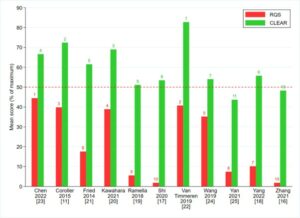This retrospective study investigated whether volumetric visceral adipose tissue (VAT) features that were extracted using radiomics and three-dimensional convolutional neural network (3D-CNN) approaches are effective when differentiating Crohn’s disease (CD) and ulcerative colitis (UC). The authors concluded that VAT-based deep learning and radiomics features were able to achieve fair accuracy in differentiating CD from UC.
Key points
- High-output feature data extracted from volumetric visceral adipose tissue on CT enterography had an effective diagnostic performance for differentiating Crohn’s disease from ulcerative colitis.
- With adjustment of clinical covariates that cause difference in volumetric visceral adipose tissue, adjusted clinical machine learning model reached stronger performance when distinguishing Crohn’s disease patients from ulcerative colitis patients.
Authors: Ziling Zhou, Ziman Xiong, Ran Cheng, Qingyu Luo, Yuanqiu Li, Qingguo Xie, Peng Xiao, Daoyu Hu, Xuemei Hu, Yaqi Shen & Zhen Li













